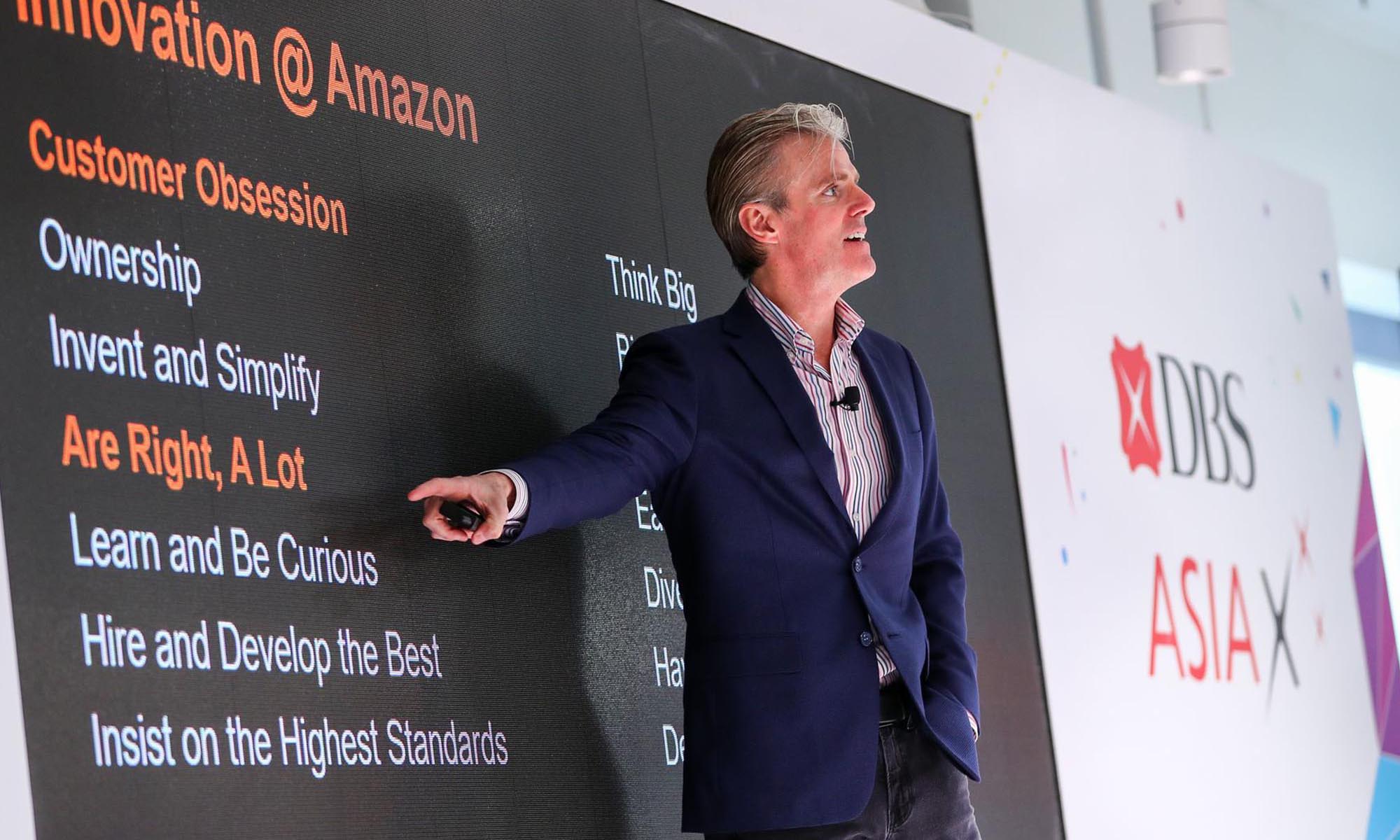Amazon’s Paul Misener shares three innovation principles and six to-dos
Amazon's vice president for global innovation policy and communications Paul Misener recently shared about the e-commerce giant’s approach to innovation at DBS Asia X (DAX), as part of the bank’s innovation talk series, DBS Imaginarium.
Speaking to DBS employees and others from the innovation community, he highlighted three key principles – from among the 14 leadership principles Amazon believes in – that the company sees as key to innovation. He also underlined some practical steps that companies can take to kick start their innovation journey.
Watch his presentation here:
Three innovation principles
1. Customer Obsession
Customer obsession is best manifest in the “working backwards” process, says Misener.
Teams at Amazon start by envisioning a product or service they want to deliver and write the press release (with FAQ) they want to issue. It’s written in the customer’s language – focused on the customer benefit – which helps teams think about how to offer new products and services to customers.
Teams have also “done things as trite as putting empty chairs at tables” during meetings, says Misener. “If customer is in that chair and we’re not embarrassed by the meeting, then we know we’re on right track.”
2. are right, a lot
The implication is that it’s okay to be wrong in the context of innovation, says Misener. Innovation requires experimentation, and that includes the possibility of failure. Amazon will “continue to make big bets” and “we’ll continue to fail at many of them”, he says, “but why this works if you do this continuously is because the few that succeed will pay for a lot of failures”.
There have been many internal failures at Amazon – and a couple of public ones, he acknowledges. For instance, the company had an auction site that came under heavy criticism. The site was transformed into zShops, which was similar but had fixed price items. That failed too. The next iteration, Marketplace, allowed third-party sellers to list their products and prices on the product detail pages, alongside items carried by Amazon. That finally turned out to be a hit, resulting in sales via third-party sellers making up more than half the sales on Amazon’s website.

 Hong Kong
Hong Kong India
India Indonesia
Indonesia China
China Taiwan
Taiwan







